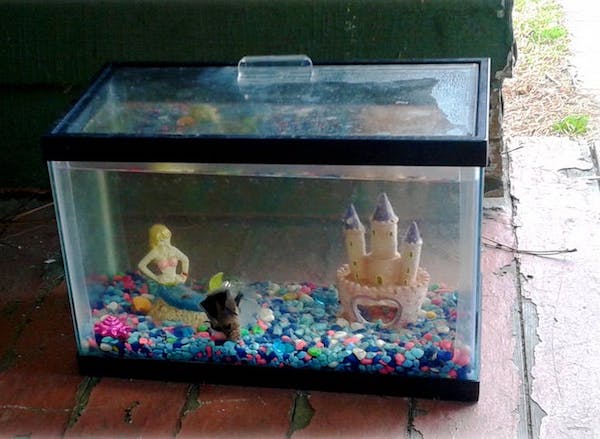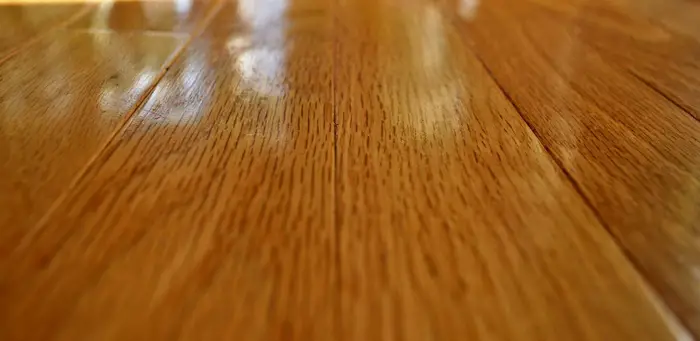There is nothing more painful for a fish keeper than to see one of the fish-floating belly up or lying lifeless inside the tank. Whether you are a beginner or you have been managing aquarium for years, fish die now and then. It could be a natural death, cleanliness issue, or underlying disease. While dealing with a fish death can be emotional, you need to be proactive to prevent other fish from dying too.
How to clean a fish tank after a fish dies? The first thing you must do as soon as you spot a dead fish is to take out the corpse, examine the dead body, and take necessary steps based on your analysis. If it looks like a natural death, a thorough cleaning may not be necessary. However, if the corpse suggests an internal infection, you may need to change water and clean the interior contents thoroughly.
What Happens If You Don’t Remove The Dead Fish?
Unless you remove the dead fish soon, the body will decompose and pollute the warm, bacteria-laden water. If the fish died from a disease, you would not want other fish to consume its body parts. So, act quickly before it causes a health hazard for other fish in the tank.
After you take out the dead fish, give a quick look to examine the corpse. Are the fins and other body parts intact? Is there a change of color? Is the body bloated? Damaged fins indicate that the fish was bullied or beaten by incompatible fish species. It is common in the case of Malawi cichlids.
If the body looks bloated, this could be due to an internal infection. Test the quality of water immediately because poor water quality is one of the main reasons behind fish deaths. If the water fails the quality test, be prepared to fix any issue such as ammonia.
You must always be ready for an emergency water change if needed. Follow the steps given below to clean a tank after a fish dies. Some of the items you must always have in stock are:
- Siphon and a special bucket
- Algae Pad
- Bleach solution
- Thermometer
- Dechlorinator
- Filter bacteria booster
- Test kit to check ammonia, nitrite, and pH levels
If the water passes the quality test, the fish death may be brought about by other reasons such as starvation, long-term stress, disease, overfeeding, or inappropriate conditions such as keeping soft water fish in hard water, etc. You don’t need to change water or do a thorough cleaning in this case. A weekly cleaning, as usual, may be enough.
Steps To Clean The Fish Tank (Freshwater tank)
Scrub the tank
Take a scrubbing pad and rub along the glass to remove any algae formation sticking on the walls. You may use a razor blade to scrape out stubborn patches. Do not use the scrubber from your kitchen sink as they may have residue of detergent. Always use a separate pad for cleaning tank. It is better to do this step after removing 10-20% of the water.
Check water quality
If your fish died a natural death, a water change might not be necessary. Just make sure, you do the normal 10 to 20% water change weekly to keep other fish healthy. However, if you suspect an infection and possible contamination of the water, do a quick quality test. Based on the results, you may change 25 to 50% of the water and test again.
Important advice – A 100% change of water is rare and not recommended because it can be an environmental shock for the other surviving fish. However, if the water fails the quality test even after a 75% change, you may want to consider a 100% replacement.
Eliminate wastes
To replace the poor quality water, start the siphon and direct the infected water into a bucket. If you are a beginner, you may buy aquarium siphons online to hook them up to the sink. The siphons come with instructions on how to use them. Some products allow you to select the suction level of water and specific temperature when filling the tank with water.
Next, take the gravel vacuum and push it amidst the gravels to suck out fish wastes, debris, excess food, dirt, and germs. If you have a sand substrate in the tank, avoid using a vacuum and run your fingers to remove any gunk or debris trapped under the sand. If you have weak or delicate fish in the tank, cover the vacuum with a never-used stocking to reduce its intensity. However, the mesh should be large enough to suck up the wastes.
Clean decorations
I prefer not to have too many tank decorations so that there is enough space for fish to move around. After a fish dies, you must clean the inner decorations by wiping them with an algae pad or a brand new soft-bristled toothbrush. Never use a soap or detergent as any chemical is harmful to the fish.
If you are having difficulties cleaning decorations in a large tank, take them out of the tank and soak in 10% bleach solution for at least 15 minutes. Pour hot water to remove any traces of bleach from the decorations before putting them back into the tank.
Change water
Replace the old tank water with fresh and treated tap water. Make sure the temperature of the water is the same as the one inside the tank because a significant change of temperature can make other healthy fish sick. If tap water has traces of metals, you may use distilled water or bottled spring water to be on the safe side.
If the fish died due to infection or sickness, add some aquarium salt to fresh water to prevent diseases and ensure that other fish live longer. Wait for a few hours to let the water clear up and become sparkling clean. If the water is still cloudy after several hours, there could be an issue. Avoid using clearing agents as they will hide any problems that need immediate attention.
Change filter (if needed)
Post a fish death, you may consider changing the filter cartridge to ensure that there is no risk of infection. The good bacteria usually live inside the gravel, so there is no harm in changing the filter. I suggest rinsing the filter cartridge with fresh water weekly and replacing it monthly.
How To Clean A Saltwater Aquarium After A Fish Dies?
The salt-water aquariums have slightly different needs. If a fish died inside the tank due to infection, you must remove the corpse immediately and examine the body. You must follow the cleaning procedures as mentioned above with the help of a scrubbing pad, and replacing water 50 to 75% until the water passes the quality tests.
Adding water to a saltwater tank is slightly different, and you would need distilled or reverse osmosis water for this purpose. Put the water in a plastic bucket and heat it using a specialized heater. Add salt to maintain the salinity and pH level of the water. Check the instructions at the back of the packet to add the right quantity of salt to water.
Leave water overnight to aerate properly and next morning check the salinity level using a hygrometer or refractometer. The ideal salinity level of saltwater should be between 1.021 and 1.025, and the water temperature should be between 73 and 82 degrees Fahrenheit.
Please remember that if the water is infected after a fish dies and you need to do a major water change, you will first need to remove remaining fish. Transfer them to a separate fishbowl while you sanitize the tank and change water. If the water change is minimal, you can let the other fish stay inside to get acclimatized to the change.
5 Common Reasons Why Your Fish Dies
Stress is bad for your fish as much as it is bad for you. It may be caused by various factors, but sometimes it may be tough to tell that your fish is stressed. If the fish stays in a stressful environment for too long, this will ultimately result in an untimely death. Here are a few reasons that cause stress.
- Not setting up a new tank properly can cause death. If you bought a new tank, it would take some time to make it fit for your aquatic friends. Introduce the good bacteria in the aquarium before you put fish and make sure the ideal water temperature is always maintained.
- Buying the wrong fish can also lead to its death. For example, a saltwater fish cannot thrive in freshwater and will ultimately feel stressed out to death. Another example is betta fish that prefers calm water so a bubbler or filter nozzle can cause stress.
- Too many fish crammed inside a small tank is a clear fish sentence. If you keep adding more fish in a small space, it means more poop and less oxygen to breathe. With a limited amount of bacteria to break down the waste, the water will get polluted and cause infection and diseases.
- Mixing incompatible fish can also kill your fish. Some fish species like cichlids, blue gourami, Chinese algae eaters, and male betta can be aggressive, fight over food and even bully other fish. Always being chased and bullied can cause a stressful environment for your fish.
- Overfeeding is another common cause of fish death. You not only overstuff the fish but also make the water harmful. More food means they poop more and uneaten food also decays faster. Hence, feed only as much needed and clean the tank regularly.
The Final Words
Seeing your beloved pet lying lifeless inside the tank can be heartbreaking for you, but don’t beat yourself up for it! Accidents do happen, and you need to learn from them. Was this a natural death after your fish lived a full life or was it induced due to stress? Identifying the reasons and taking care of the remaining fish will make you a better fish keeper and your fish will thank you for it!
See Also:
How To Clean Steel Wool? + What Not To Do
How To Clean Ikea Fabric Boxes
How To Clean Mud Off Uggs
How To Clean Your Bookshelves Without Removing Books


